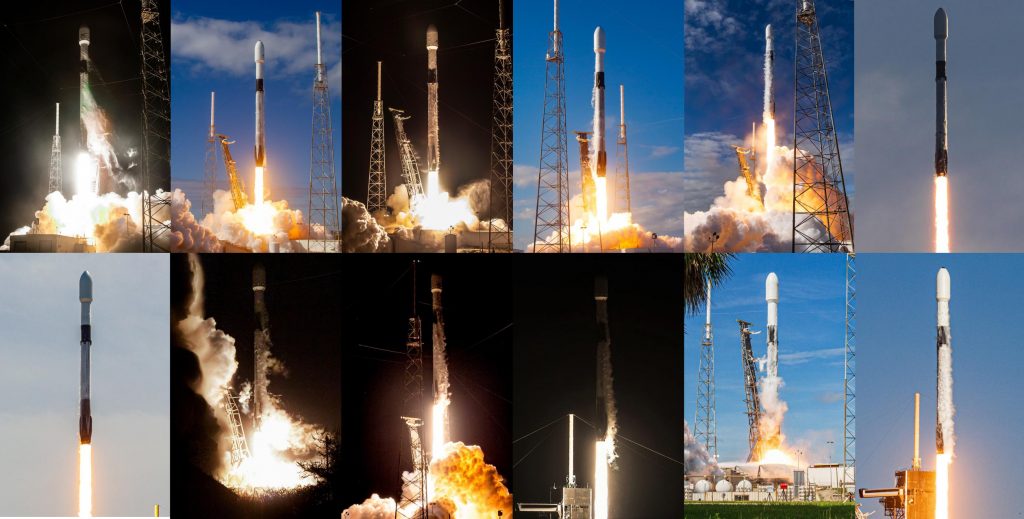Microsoft Azure has announced a partnership with SpaceX that will give customers the ability to both access and deploy cloud computing capabilities anywhere on Earth with the help of Starlink internet.
Ultimately designed with anywhere from ~4,400 to ~40,000 operational satellites in mind, SpaceX’s Starlink constellation aims to connect users to the internet where existing access is either too expensive, limited, or completely unavailable. Of course, however, connecting the world’s unconnected is a immense and challenging aspiration – one that is unlikely to be one of the Starlink constellation’s first major uses.
As CEO Elon Musk has been keen to regularly note, the real challenge of SpaceX’s Starlink satellite internet project is ultimately ensuring that the constellation doesn’t join the graveyard of bankrupt companies that came before it. For better or worse, that will necessitate close relationships with as many premium enterprise-class customers as possible. With its estimated 2020 market cap of ~$370 billion expected to grow to ~$800 billion or more by 2025, cloud computing is one such potentially lucrative application.
We’re joining forces with @SpaceX, @SES_Satellites, @KSAT_Kongsberg and others to address the greatest challenges in the space community.  With #Azure, our space customers will have better data and connectivity access and resources than ever before: https://t.co/P7w1KShq8E pic.twitter.com/RUW4sP9NPK
With #Azure, our space customers will have better data and connectivity access and resources than ever before: https://t.co/P7w1KShq8E pic.twitter.com/RUW4sP9NPK
— Micros ft (@Microsoft) October 20, 2020
ft (@Microsoft) October 20, 2020
(adsbygoogle = window.adsbygoogle || []).push({});
To better exploit the benefits offered by the kind of blanket connectivity Starlink may soon offer, Microsoft has developed its own Azure Modular Datacenter (MDC), essentially a data center built into a mobile, satellite-connected shipping container. Customers can choose to either use the MDC as a wholly independent datacenter or connect it to one or more satellite constellations, Starlink included. With what a SpaceX executive recently described as dual parabolic antennas, an MDC could likely have access to gigabit-class internet connectivity with latency comparable to fiber anywhere on Earth.
According to Microsoft, possible scenarios where an MDC would be valuable include “mobile command centers, humanitarian assistance, military mission needs, mineral exploration, and other use cases requiring high intensity, secure computing.” Several Azure Mobile Datacenters have already been deployed and are being trialed by private sector companies and the US military.
Likely less than coincidental, Microsoft Azure’s Starlink partnership comes around the same time as Amazon has begun to peel back the curtains on Project Kuiper, a low Earth orbit (LEO) satellite internet constellation almost indistinguishable from Starlink. Lead and largely staffed by former Starlink executives and employees, Project Kuiper aims to deploy a constellation of ~3200 small, interlinked communications satellites – a goal Amazon has pledged at least $10 billion to achieve.
Somewhat unsurprisingly, Kuiper – lead by executives SpaceX CEO Elon Musk personally fired in 2019 for moving too slowly – has no set schedule or indication of early prototype development and is effectively 3-5 years behind SpaceX, OneWeb, and other prospective constellation operators from the get-go.
 SpaceX has launched 773 operational Starlink satellites in less than one year. (SpaceX/Richard Angle)
SpaceX has launched 773 operational Starlink satellites in less than one year. (SpaceX/Richard Angle)
An IEEE Spectrum article offers an excellent summary of the web services. logistics, and online shopping giant’s most likely motivation behind investing so much money in a satellite constellation that is – at best – years behind.
“‘With Amazon, it’s a whole different ballgame,’ says Zac Manchester, an assistant professor of aeronautics and astronautics at Stanford University. ‘The thing that makes Amazon different from SpaceX and OneWeb is they have so much other stuff going for them.’ If Kuiper succeeds, Amazon can not only offer global satellite broadband access—it can include that access as part of its Amazon Web Services (AWS), which already offers resources for cloud computing, machine learning, data analytics, and more.”Michael Koziol – IEEE Spectrum – 17 August 2020
In other words, Amazon likely believes that its potential advantages are so strong and so unmatched that it doesn’t matter if it’s years late to the party. On the other hand, it could also be the case that Amazon – and Amazon Web Services in particular – perceives a lack of the capabilities offered by a high-bandwidth satellite internet constellation to be such an existential threat that the company has no choice but to try to enter the fray.
As such, SpaceX’s partnership with Microsoft Azure Cloud Services is a direct shot across Amazon’s bow, demonstrating that even if Project Kuiper manages to begin operational satellites in just a year or two, the company will immediately face experienced, organized competition. There is some level of irony in the fact that, purely out of corporate spite, Amazon will now likely never become a Starlink customer to avoid helping a direct competitor, meaning that AWS will be consciously putting itself at a competitive disadvantage for years to come by waiting for Project Kuiper.
The post SpaceX Starlink partners with Microsoft Azure to deploy cloud computing anywhere appeared first on TESLARATI.
Article Source and Credit teslarati.com https://www.teslarati.com/spacex-starlink-microsoft-azure-partnership/ Buy Tickets for every event – Sports, Concerts, Festivals and more buytickets.com

Leave a Reply
You must be logged in to post a comment.